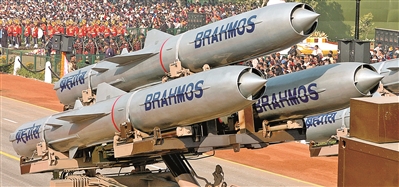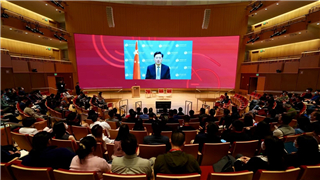
By Fang Xiaozhi
方晓志
According to Indian media reports, India has completed its investigation into the "misfired" missile to Pakistan recently, claiming that several officials shall undertake the responsibility. The Indian Air Force mistakenly fired a BrahMos supersonic anti-ship cruise missile on March 9, and it fell into Pakistan. Fortunately, there were no casualties. India then established an incident investigation committee, determined that this was an accident caused by a technical malfunction during routine maintenance, and asked the Indian Air Force to review various procedural specifications to ensure that similar incidents will not occur again. Pakistan protested the incident to India, expressing concerns that such an accident could escalate and spark conflict due to the lack of risk de-escalation agreement or mechanism between the two countries.
据印度媒体报道,近日,印度完成向巴基斯坦“误射”导弹事件的调查。根据调查结果,多名官员应对此承担责任。3月9日,印度空军误射一枚“布拉莫斯”超音速反舰导弹,导弹落入巴基斯坦境内,所幸未造成人员伤亡。随后,印度成立事件调查委员会,认定这是在例行维护过程中因技术故障导致的意外事故,要求印度空军对各种程序规范进行审查,以确保将来不会发生类似事件。巴基斯坦就该事件向印方提出抗议,对由于两国缺乏有力的降低风险的协议或机制,类似意外可能升级并引发冲突表示担忧。
India has been continuously seeking the status of a major power by increasing its regional influence and strengthening its armament construction for a long time, for which developing various types of missiles and improving strike and deterrence capabilities have played an important part. Driven by relevant plans, India has successively developed the Prithvi short-range ballistic missiles system and the Agni medium and long-range ballistic missiles system. The Prithvi family has three versions , and they are the main means for the Indian army to carry out in-depth precision strikes. The Agni series have five, and they are the strategic weapons for India to deter the enemy. The Agni-5 ballistic missile has a range of 5,000 kilometers and can carry multiple nuclear warheads for strategic nuclear strike mission. It is currently the most powerful and longest-range strategic missile in India. The Agni-6 ballistic missile is still under research and development, which is expected to have a firing range of more than 10,000 kilometers.
长期以来,印度不断谋求大国地位,意图增强地区影响力,并不断加强军备建设。其中,发展各种类型导弹、提升打击与威慑能力成为其重要举措之一。在相关计划的推动下,印度相继研制了“大地”系列近程弹道导弹和“烈火”系列中远程弹道导弹。“大地”系列近程弹道导弹共3种型号,是印军实施战役纵深精确打击的主要手段。“烈火”系列中远程弹道导弹共5种型号,是印度实施对敌威慑的战略性武器。其中,“烈火-5”弹道导弹射程达5000千米,可搭载多枚核弹头,执行战略核打击任务,是印度目前威力最大、射程最远的战略导弹。当前,印度还在继续研制“烈火-6”弹道导弹,预计射程将超过1万千米。
In addition to independent research and development, India is also actively working with foreign countries and introducing advanced technologies to improve missile performance as soon as possible. The BrahMos supersonic anti-ship missile is jointly developed by India and Russia, which is based on the Russian Yakhont supersonic anti-ship missile, and has developed into three types including land-based, air-launched, and ship-borne. India said it will also develop a submarine-launched version to establish a firepower system along with Prithvi and Agni ballistic missiles, in a bid to deal with various threats and implement strategic deterrence.
除自主研发外,印度还积极与国外进行合作,希望通过引进国外先进技术,尽快掌握更多核心军事技术,以提升导弹性能。“布拉莫斯”超音速反舰导弹由印度和俄罗斯联合研制。该型导弹以俄罗斯“宝石”超音速反舰导弹为基础,目前已形成陆基、空射、舰载3种类型。印度方面声称,未来还将研发潜射版,与“大地”“烈火”弹道导弹一起,形成各层次火力梯次配置,应对多种威胁并实施战略威慑。
India's current status of weapons research and development still lags behind its ambitious development plan, especially in the field of missile research and development. Although India has mastered relevant technologies of missile manufacturing, it has few independent intellectual property rights, and many core technologies come from abroad. In addition, India has failed to establish a complete defense industrial system, and the weapons it has developed are always unsatisfactory. The "misfiring" of the BrahMos supersonic anti-ship missile this time also fully exposed the shortcomings of its missile design and the lack of missile research and development capabilities. India’s missile technology is still facing multiple difficulties, and it still has a long way to actual combat.
与雄心勃勃的发展计划相比,印度当前的武器研发现状不容乐观。特别是在导弹研发领域,虽然印度已掌握导弹制造的相关技术,但获得自主知识产权的技术并不多,很多核心技术都来自国外。加上印度始终未能建立完整的国防工业体系,其研制的武器总是不尽人意。此次“布拉莫斯”超音速反舰导弹“误射”,也充分暴露其导弹设计本身存在的缺陷和印度在导弹研发方面能力的不足。可见,印度的导弹技术仍然面临研发过程不顺、性能优势不足、体系建设不完善等多重困难,“实战之路”依然遥远。
(The author is an associate professor at the School of International Relations, PLA National University of Defense Technology)
(作者为国防科技大学国际关系学院副教授)











